The Dark Tower series is complex and layered with a lot of detail, so it makes sense that King would tie in his other works. However, the links to his other novels aren’t exclusively horror titles.Stephen King’s best non-horror book, The Stand, has a number of parallels and connections. King is undoubtedly a clever writer, but The Dark Tower series proves just how intelligent he is through his many subtle tie-ins to his other works.
8 It (1986)
Pennywise & Maturin Have A Past
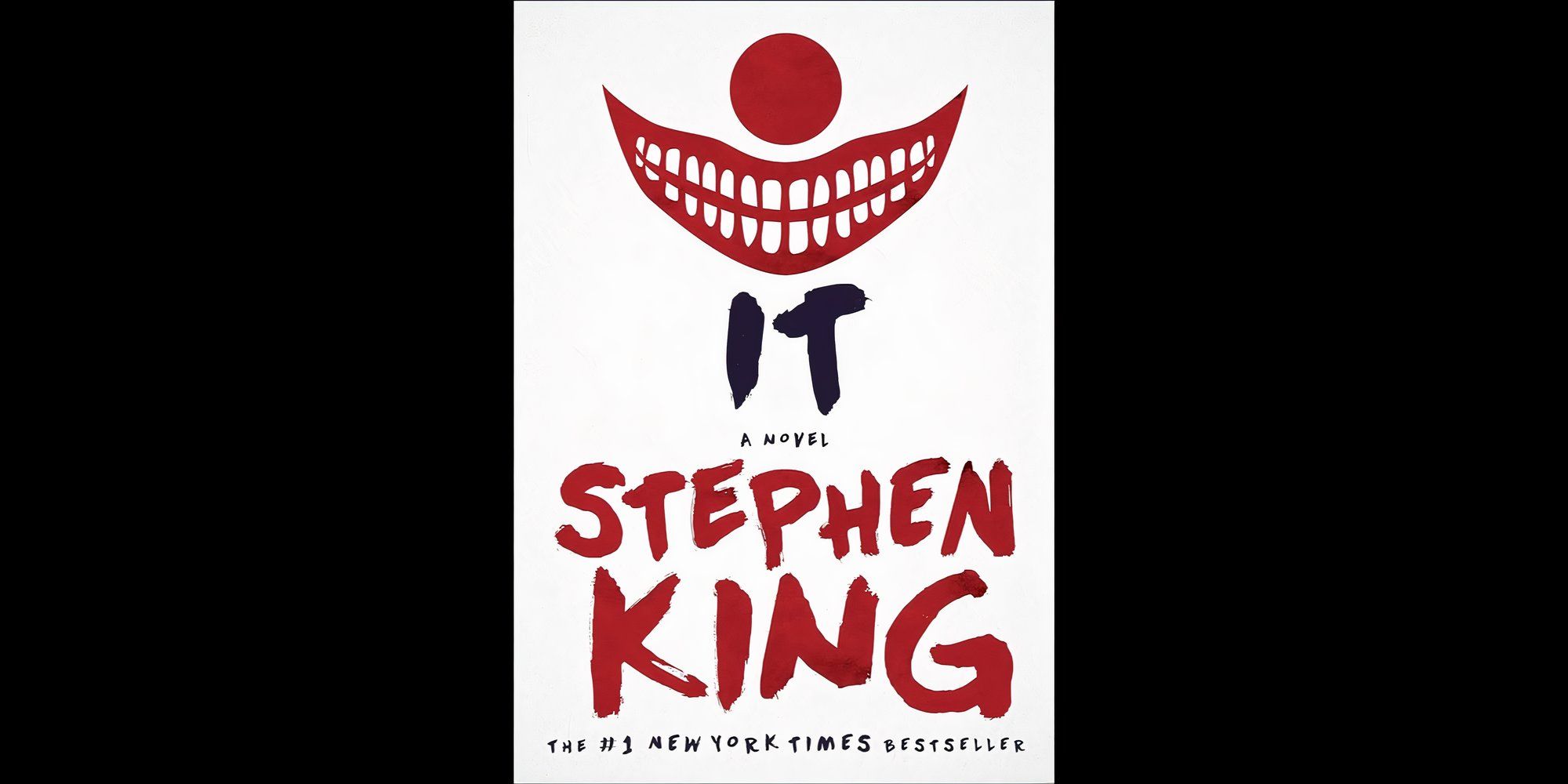
Even non-readers of King are familiar with It and the Losers Club, especially the novel’s iconic and petrifying killer clown, Pennywise, who is also known as the titular “It” as well. King’s It focuses on the group through their childhoods and into their adult years, who are constantly haunted by memories of the demonic figure peering out through the sewers of Derry, Maine. Pennywise is one of the most notable villains from the King universe, and it is mainly him that is connected to The Dark Tower series.
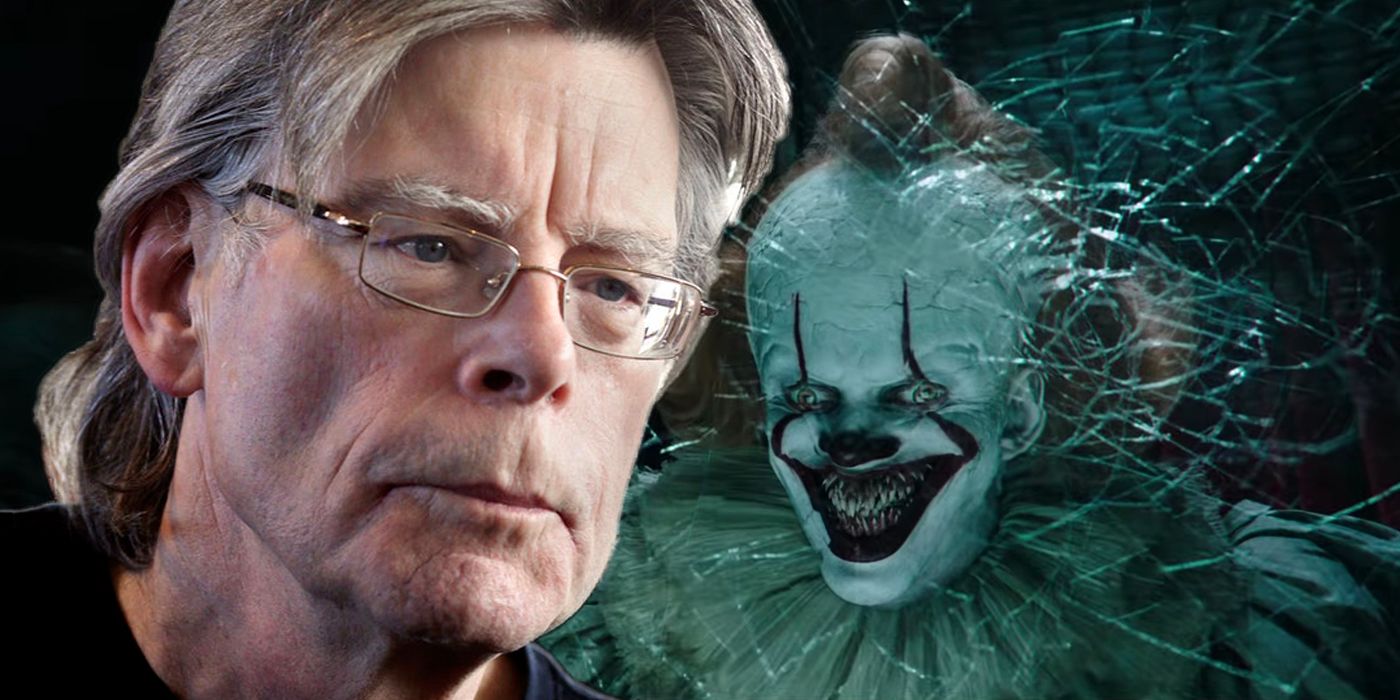
Related
Every Stephen King Character In Multiple Books
From Randall Flagg to Dick Hallorann to Pennywise the Dancing Clown, here are the Stephen King characters who appear in several of the author's works.
Maturin, or the Turtle, plays a significant role in The Dark Tower books, but he is actually first introduced to readers in It. Maturin and Pennywise are wildly different creatures that are both from Stephen King’s Macroverse. While Maturin is a wise and loyal figure, Pennywise considers him to be far too fragile and stupid, and it sees the Turtle as an enemy. Despite this, Maturin refers to Pennywise as a “brother.” While Pennywise doesn’t feature directly in The Dark Tower series, it is frequently mentioned and serves as an unseen villainous force.
The Macroverse is a concept that is very similar to the Todash Space, another large void between dimensions and alternate universes that is full of more unhinged King monsters.
However, there are also some interesting parallels between It and The Dark Tower books. The Macroverse is a concept that is very similar to the Todash Space, another large void between dimensions and alternate universes that is full of more unhinged King monsters, which is mentioned throughout the series, but specifically in the titular entry.

Related
Pennywise the Monster Clown's Origin In IT Explained
Pennywise the monster clown is the reason Stephen King's IT terrifies readers and audiences. Here are the origins of the clown from IT explained.
Pennywise is an enigmatic supernatural creature who feeds on humans, and although it does consume flesh, it also thrives on the fearful energy of its victims. This process is rather similar to Dandelo from The Dark Tower. Dandelo, a creature from the Todash, also feeds on emotions, but instead of fear, he fills himself up with the laughter of others. While this doesn’t sound particularly dangerous, part of Roland Deschain's journey through Maine in The Dark Tower sees him rescue Patrick Danville, who Dandelo locks up to drain him at will.
7 The Stand (1978)
Randall Flag's Debut
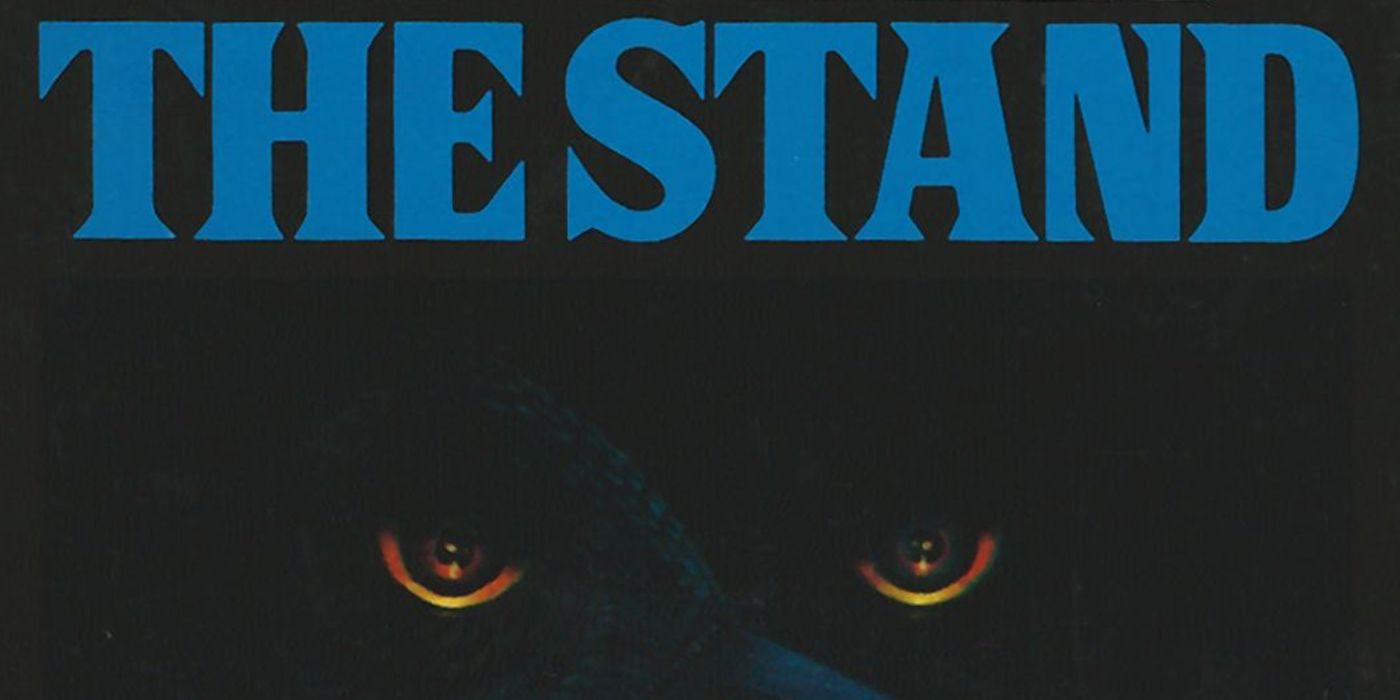
The Stand’s main antagonist, Randall Flagg, who is arguably Stephen King’s ultimate villain, appears in many King novels. However, The Stand is when the hypnotic sorcerer is first introduced to readers, a story about a post-apocalyptic world and humanity’s survivors dividing themselves into the sides of classic good or evil. Of course, Flagg is also the primary evil in The Dark Tower series, and he features in most of the installments, either as a prominent threat, in an indirect reference, or via a flashback.
Naturally, readers of The Dark Tower books need to be familiar with The Stand to understand just why Flagg is such a crucial figure in the King universe. It’s impossible to avoid learning about Flagg, as the first lines of The Gunslinger immediately refer to “the man in black,” another title the character is often labeled as. However, The Stand is connected to The Dark Tower titles because it provides more context and backstory to Flagg, which then makes revisiting his debut story even more interesting.
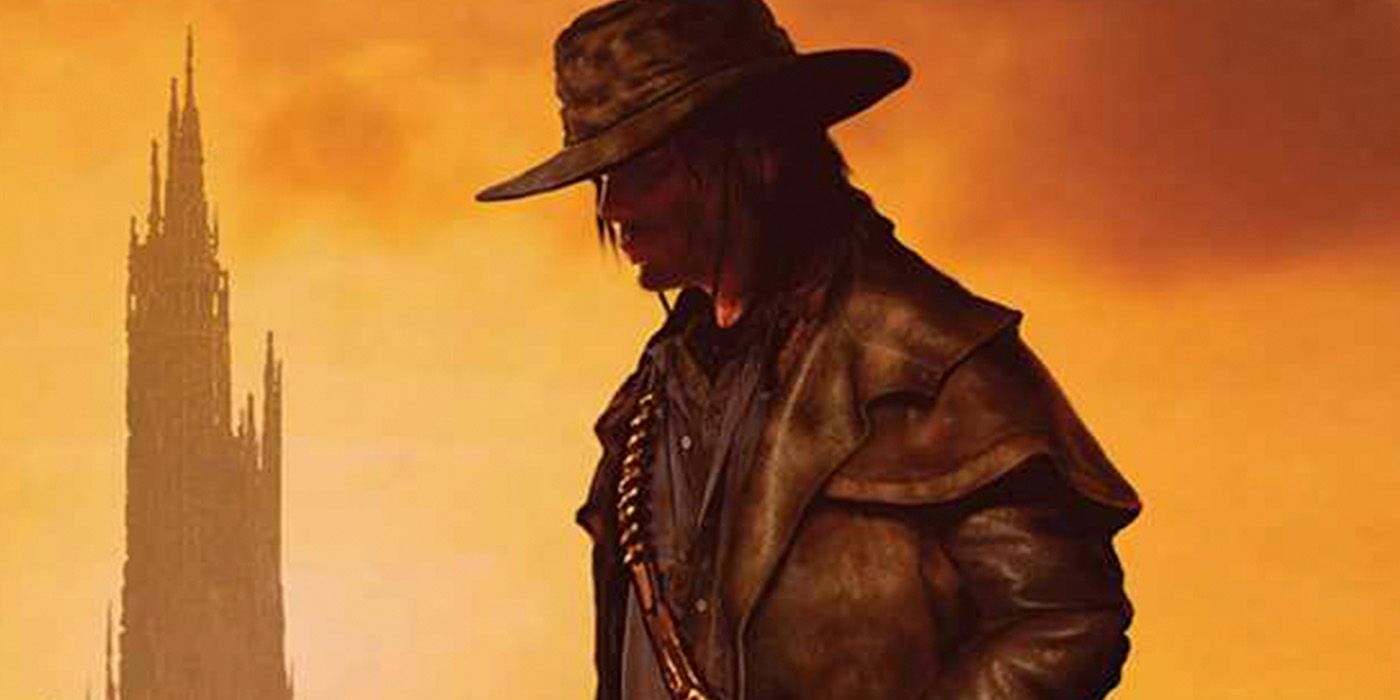
Related
10 Best Stephen King Book Endings, Ranked
Stephen King's books are sometimes criticized for their endings, but which of his novels had the most satisfying and memorable conclusions?
The titular novel reveals how Flagg ends up in cohorts with the Crimson King and how his childhood experiences impact who he has become. The abuse Flagg faced while growing up partially explains why torture is a default response for him. Flagg’s initial form in The Stand is described as a "tall man of no age" who dresses like a cowboy, which is very similar to Roland Deschain’s gunslinger appearance. While it isn’t confirmed whether Flagg’s choice of style is a nod to Deschain, it’s still an intriguing parallel.
Deschain crosses paths with Flagg several times throughout the series.
One location in which the pair meet in Wizard and Glass, however, is Topeka. The pandemic-ridden and decaying Topeka is a nod to The Stand, and while there are few survivors after the breakout, it is even more destitute by the time Deschain arrives in Wizard and Glass.
6 'Salem's Lot (1975)
Father Callahan Is A Crucial Character In Later Installments Of The Dark Tower
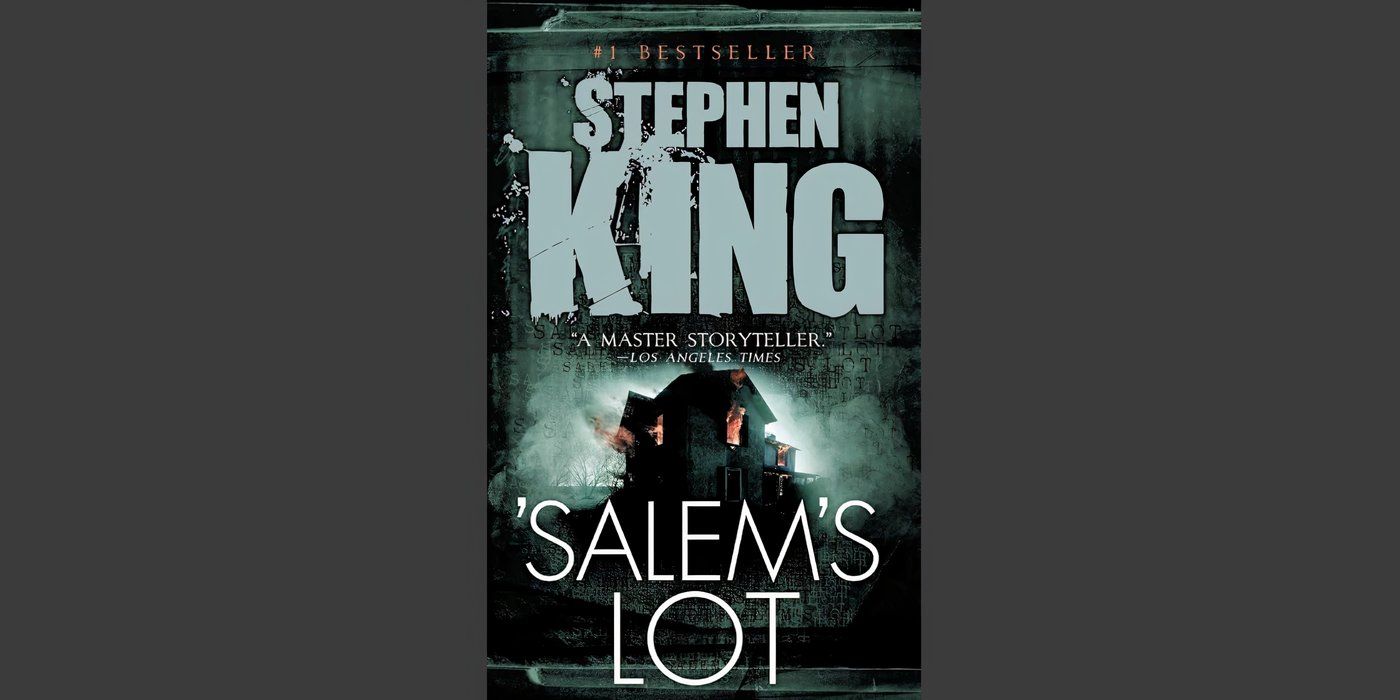
16 Stephen King books tie into 'Salem's Lot, and it is also an essential read for anyone trying to gain a better understanding of the author’s universe, let alone The Dark Tower novels. The 1975 book’s narrative is expanded in the sixth and seventh titles in the series, Wolves of the Calla and Song of Susannah, with the former reintroducing Father Donald Callahan from 'Salem's Lot. Callahan is an important character in Wolves of Calla, but without reading 'Salem's Lot, readers don’t understand why the priest is no longer able to set foot inside a church.
After Kurt Barlow forces Callahan to drink his vampiric blood, he becomes “unclean” and starts to burn when he approaches a church. Callahan then flees Jerusalem’s Lot and arrives in New York at the beginning of Wolves of the Calla, forced to live with the harrowing ability to sense vampires. Callahan’s experiences in 'Salem's Lot impact his actions in Wolves of the Calla and Song of Susannah massively, but they also motivate him to destroy the vampires once and for all.
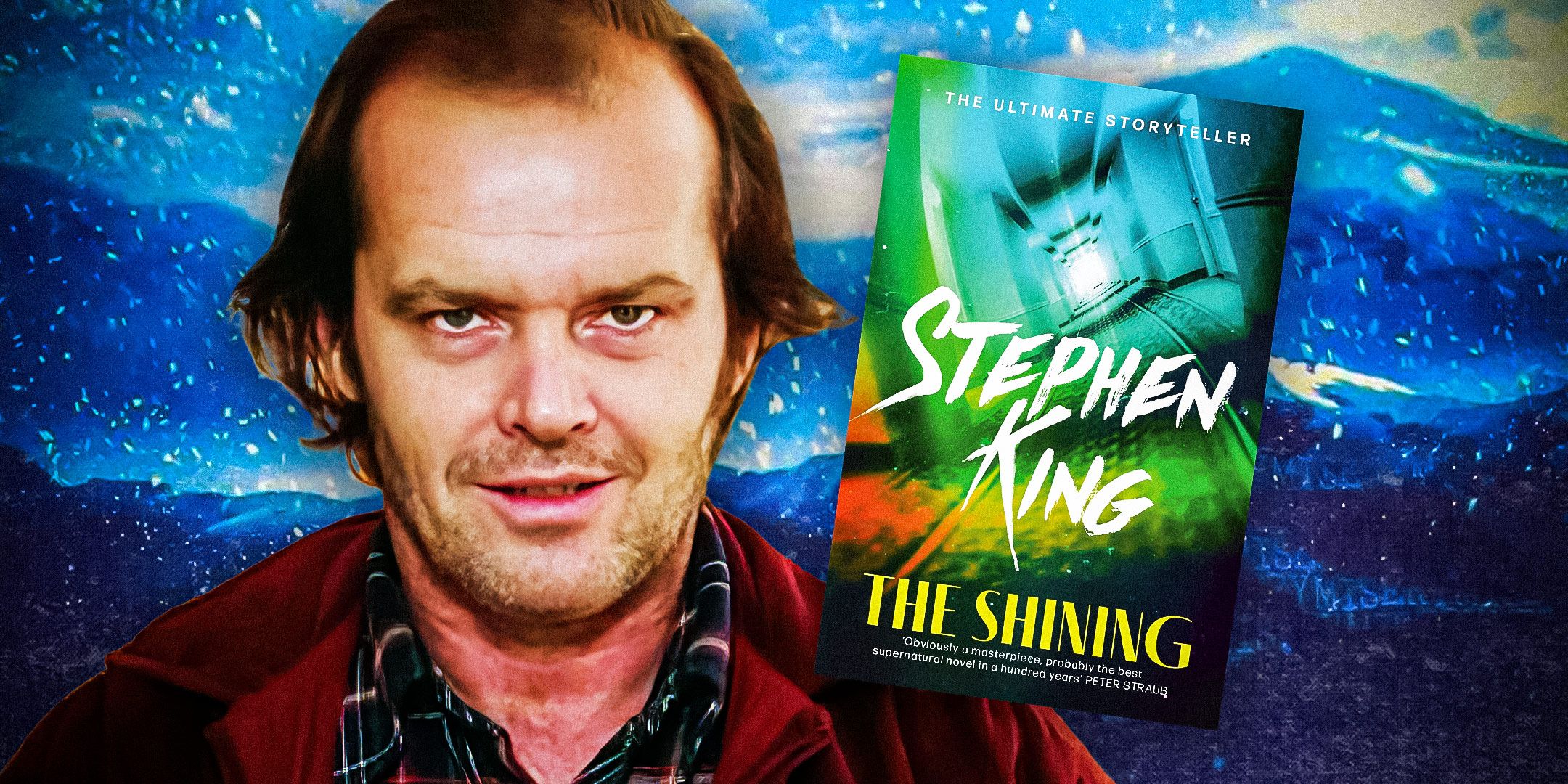
Related
10 Stephen King Books Where The Main Character Is A Writer
The old adage “write what you know” has become a trademark for horror author Stephen King, whose main characters are often writers just like him.
Although Barlow doesn’t appear in Wolves of the Calla, his role in ‘Salem’s Lot ties into the story in other ways. ‘Salem’s Lot establishes some details about King’s vampires, but Callahan learns about their different types in Wolves of the Calla. Upon discovering that Type Ones are immortal, Type Twos are created through a bite, and Type Threes can only spread disease, Callahan takes the information and his past ordeal and applies it to his battle plan.
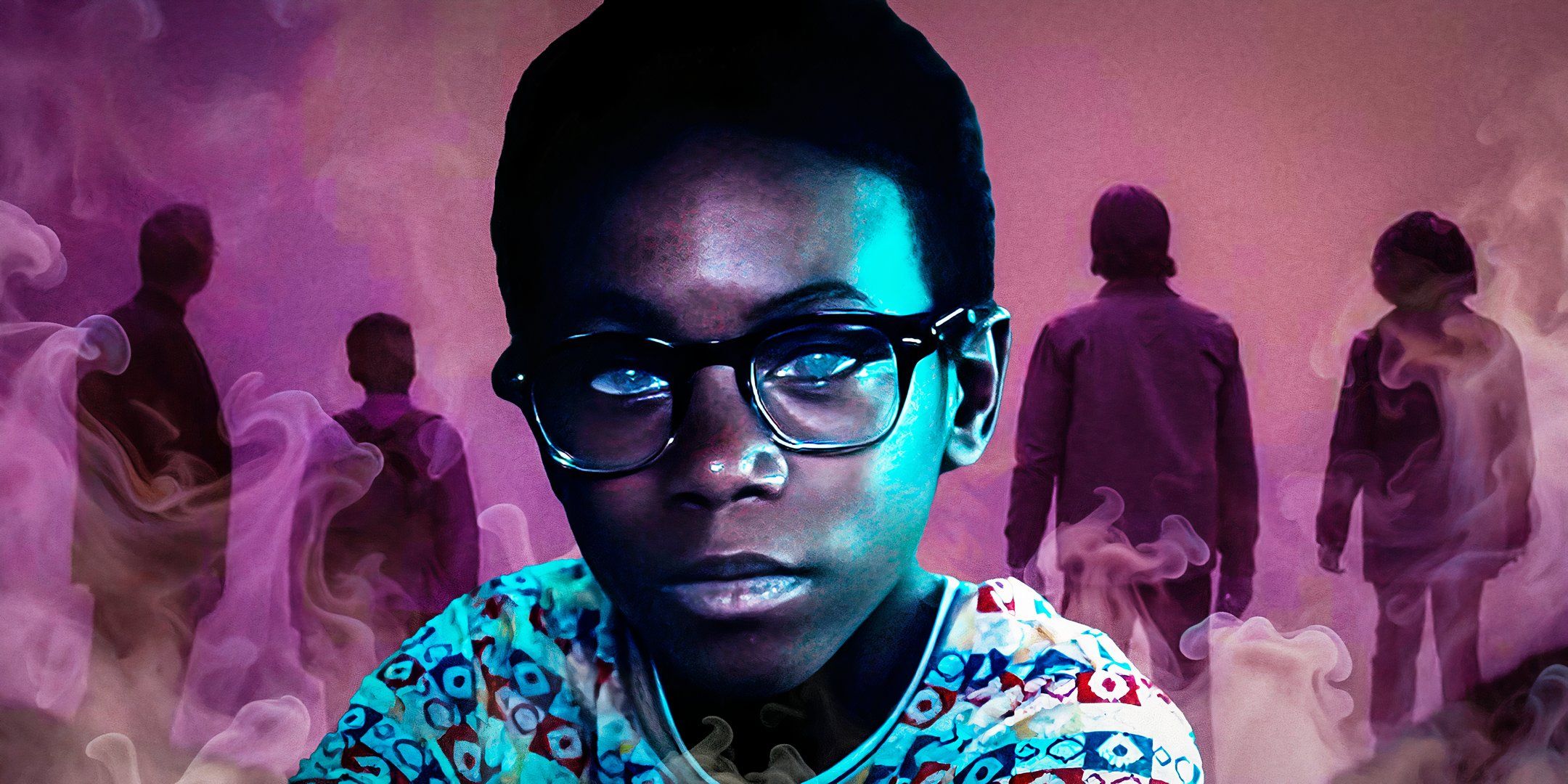
Related
22 Stephen King & Horror Easter Eggs In Salem's Lot
Max's new 'Salem's Lot adaptation is stuffed full of Stephen King Easter eggs, along with references and other subtle nods to the horror genre.
Out of all the Stephen King references to his other stories in The Dark Tower, there is one reference to ‘Salem’s Lot that is more literal and direct compared to other titles. At the end of Wolves of the Calla , Callahan comes across a copy of ‘Salem’s Lot and is stunned to find himself as one of the main characters. Unsurprisingly, this makes him question his own sanity, but this choice in the narrative proves that King is telling readers that they need to engage with ‘Salem’s Lot to truly understand the later entries of The Dark Tower.
5 Insomnia (1994)
Ralph Roberts Has Visions Of The Events In The Dark Tower
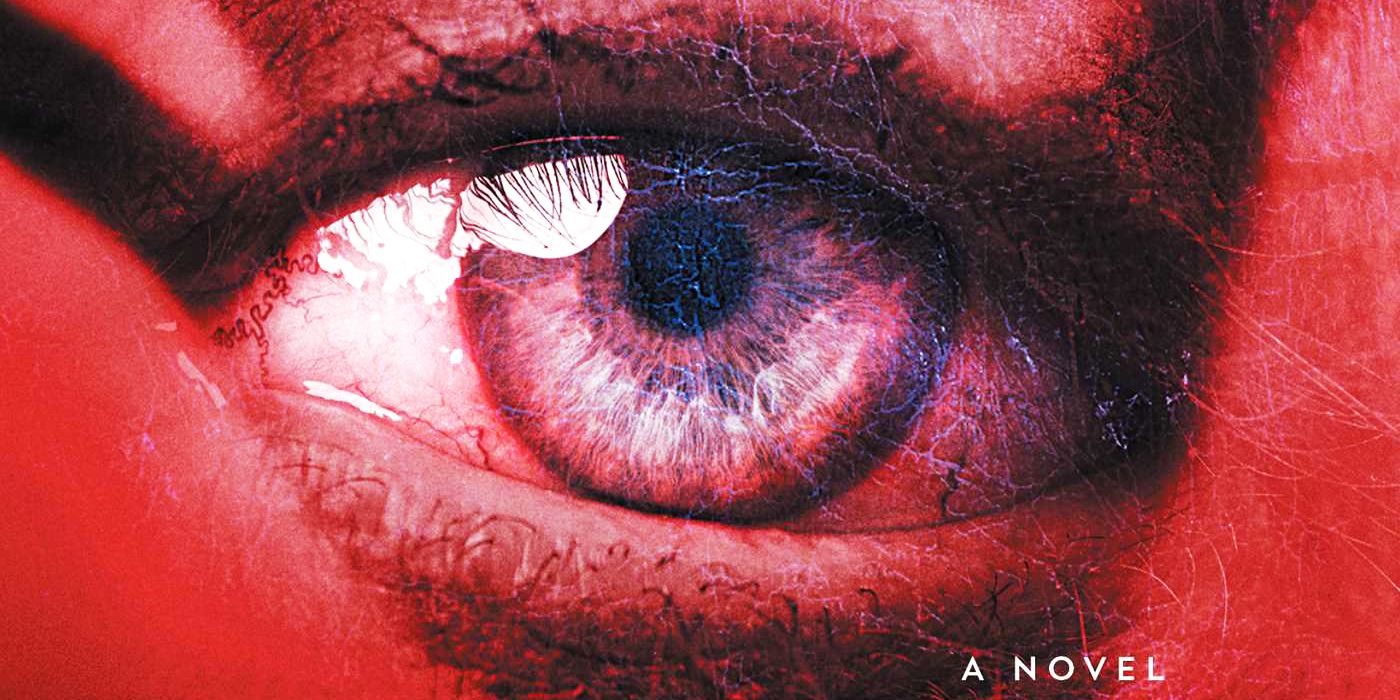
Stephen King’s 1994 novel Insomnia includes references to many of the author's works, but its most important connection to The Dark Tower is through The Crimson King. While the Crimson King is mentioned in other titles, he isn’t physically encountered until Insomnia. Ralph Roberts’ struggles to get a good night's sleep end up being beneficial in a fight against the Crimson King, a terrifying shape-shifting figure that thrives on chaos and pain.
Throughout the book, the Crimson King has his eyes set on a young boy. This is surprising, as it initially seems that pro-choice activist Susan Day is his main target. However, the child is Patrick Danville, who Roland Deschain saves from Dandelo in The Dark Tower. This is a brilliant example of King’s use of lore in his works, as the Crimson King only wants to kill Danville because he is fated to play a part in the downfall of one of Stephen King’s best villains.
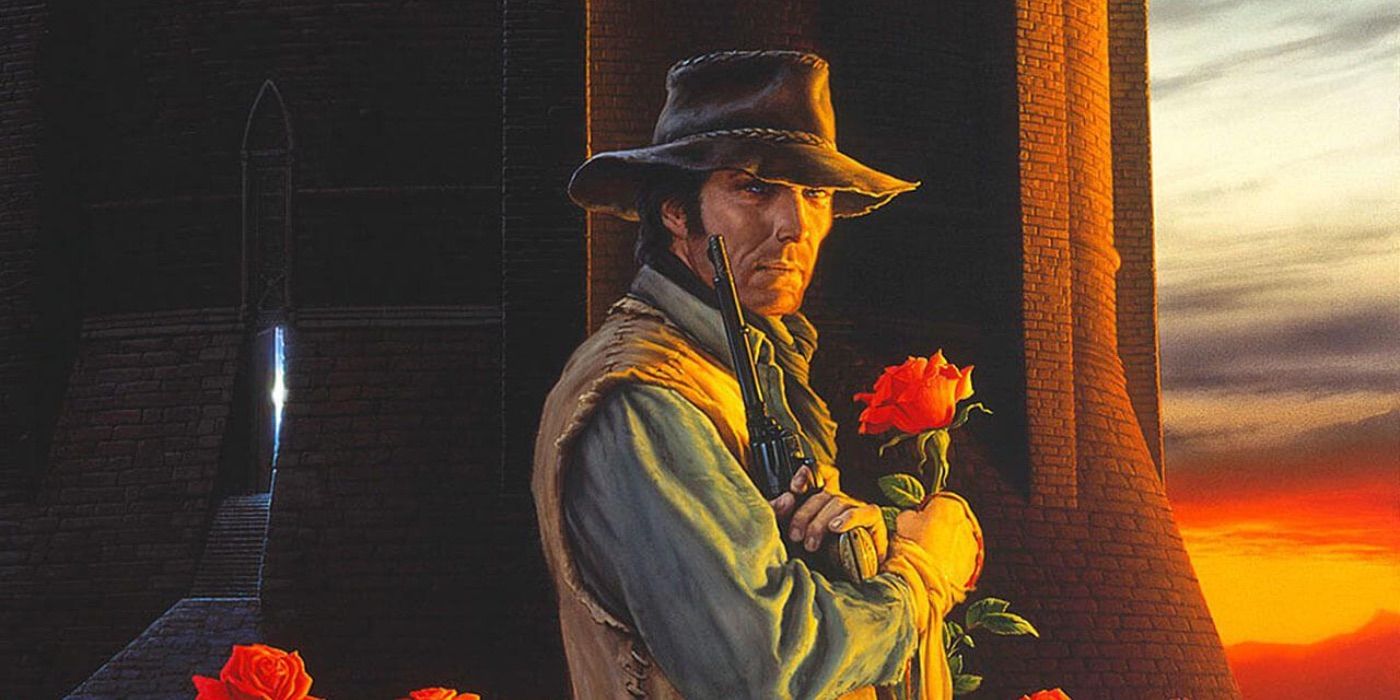
Related
Mike Flanagan's Dark Tower: Confirmation & Everything We Know About The Stephen King Adaptation
Horror maven Mike Flanagan is tackling Stephen King's epic fantasy horror series The Dark Tower, and there are plenty of exciting updates.
Danville, as a child, experiences visions of the Crimson King, but more interestingly, he also sees Deschain. While Roland Deschain doesn’t feature in Insomnia, it’s fascinating that a young Danville becomes aware of the gunslinger years before they actually meet.
The book also establishes further general details about The Dark Tower universe, too. For example, the bald doctors who recruit Ralph tell him about how accessing other levels of reality can help in their plot to defeat Atropos, which causes Insomnia ’s protagonist to see a vision of the actual Dark Tower. Insomnia also introduces the “Purpose and Random,” a concept that explains why certain things happen across the Dark Tower’s interwoven worlds.
4 Hearts In Atlantis (1999)
A Short Story Collection From King That Establishes More About The Low Men
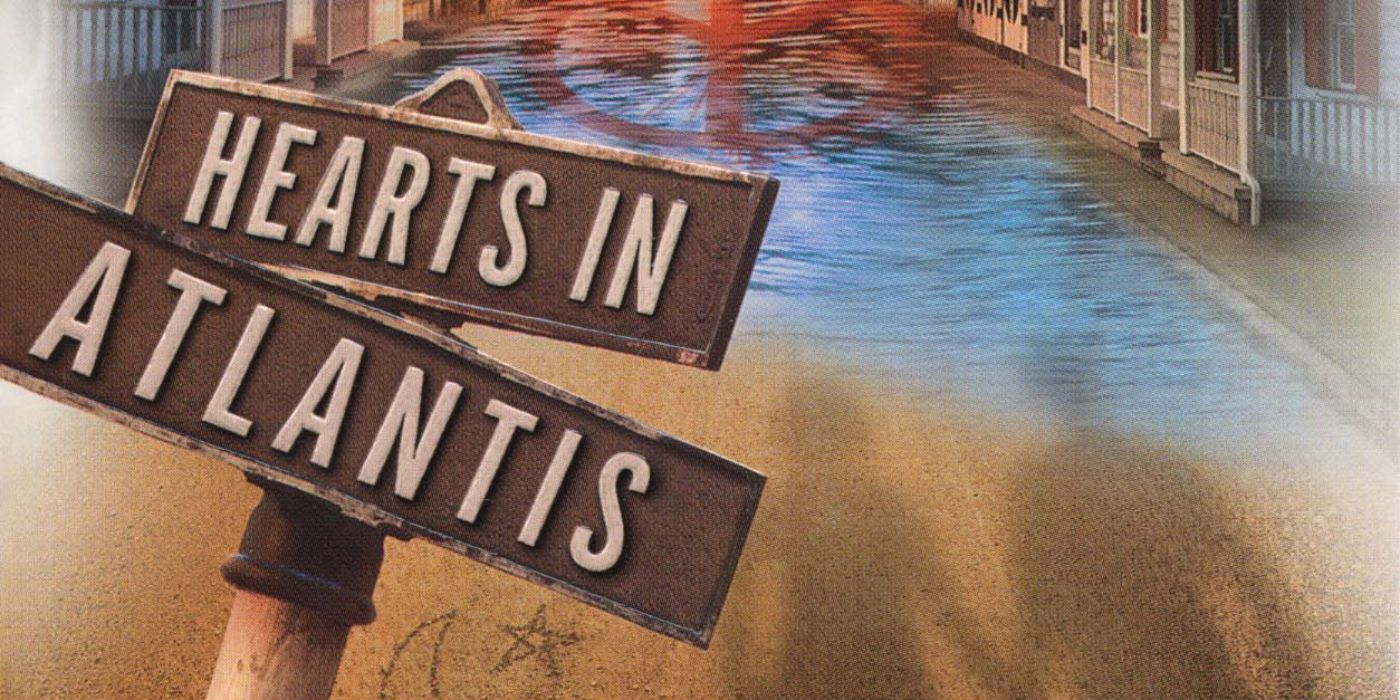
Hearts in Atlantis is a collection of terrifying Stephen King short stories, all of which are interlinked with each other in various ways. However, there are several connections to The Dark Tower universe, too. “Low Men in Yellow Coats,” one of Stephen King’s best stories about mind powers, is where readers first meet Ted Brautigan, a talented psychic or “Breaker” who the Crimson King wants to use to help destroy the Dark Tower.
Towards the end of the story, Brautigan sends Bobby Garfield a letter full of petals, which is a nod to the Dark Tower standing in a field of red, blooming roses. It isn’t until The Dark Tower that it’s clear how integral Brautigan is to the Crimson King’s operation, but it’s amazing to learn more about who he was before the fictional villain gets to him properly.
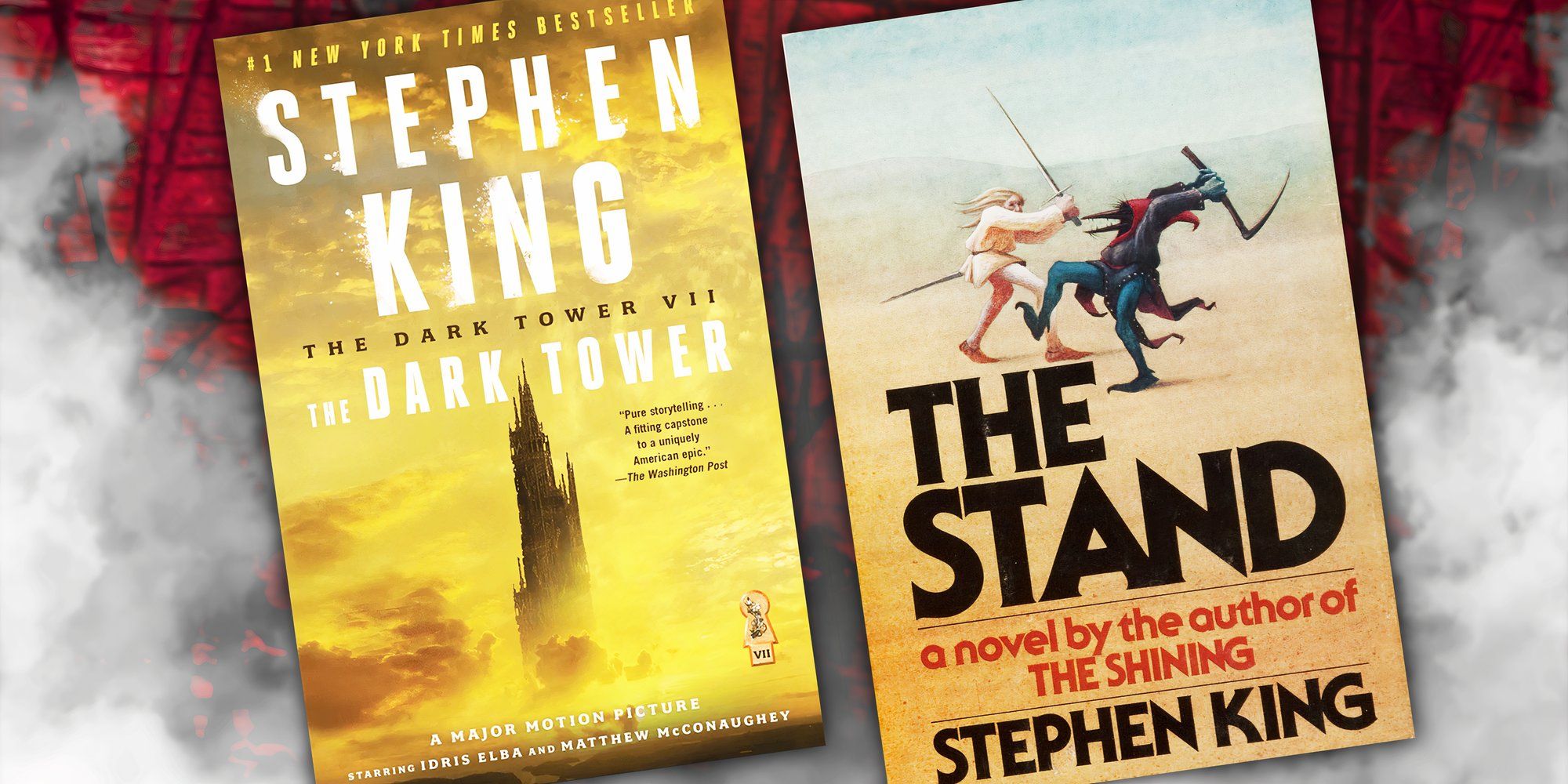
Related
5 Reasons Randall Flagg Is Stephen King's Biggest Villain (& 5 It's The Crimson King)
Randall Flagg is arguably Stephen King’s most well-known villain, but the Crimson King may be close to taking his crown as the strongest antagonist.
Hearts in Atlantis references the “low men” in a few ways. While they are a core part of King’s works in general, they are especially important in The Dark Tower series. For example, Sullivan sees a yellow coat while hallucinating in "Why We're in Vietnam," an item that the “ low men ” often sport. While it isn’t confirmed, there is reason to believe that Randall Flagg plays a part in "Blind Willie."
Veteran Willie Shearman’s scrapbook on Carol and her involvement in activism mentions her working alongside the strict leader Raymond Fiegler. It is pretty common for Flagg to take on a new persona and name, but he often reuses the initials “RF.” While King has never officially identified Fiegler as Flagg, it is widely considered that the two are the same. Walter O’Dim, Flagg’s alias in Stephen King’s The Gunslinger, is referenced in the text, and Fiegler also possesses O’Dim’s ability to be “dim.”
3 The Talisman (1984) & Black House (2001)
King's Collab With Peter Straub Delves Deeper Into The Territories & Twinners
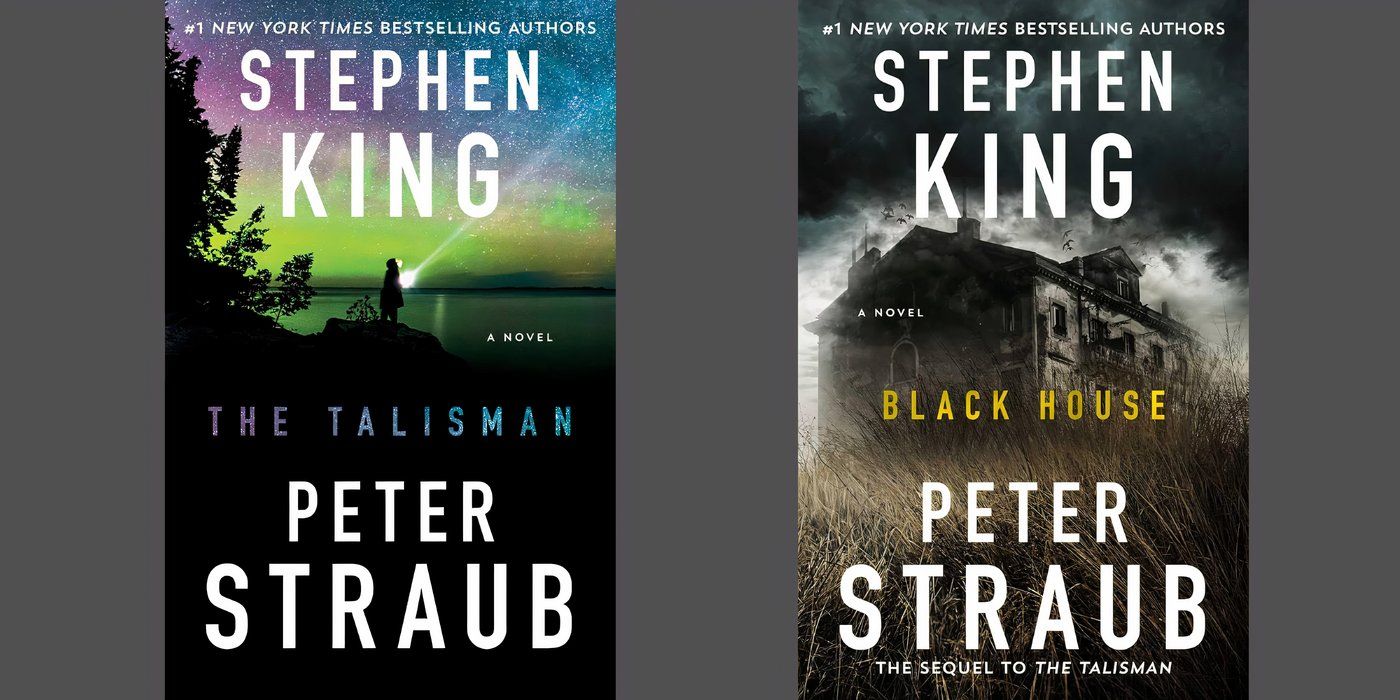
The Talisman and its sequel, Black House, are titles from Stephen King’s collaborations with author Peter Straub. While there aren’t really many direct references to the books in The Dark Tower series, there are associations in terms of themes and connections to King’s multiverse. This is mainly through the concept of “Twinners,” two people who are extremely similar in appearance and serve as the others’ counterparts in a parallel world called “the Territories.”
While The Gunslinger implies that there is such a thing as the Territories, The Talisman confirms its existence. In several of his works, Stephen King returns to the Territories and expands upon the idea. Several characters in The Dark Tower seemingly have alternate versions of themselves, but The Talisman and Black House’s protagonist, Jack Sawyer, is one of the few characters who is confirmed to have a Twinner. However, Sawyer’s Twinner is dead, but this allows him to travel freely between the worlds.
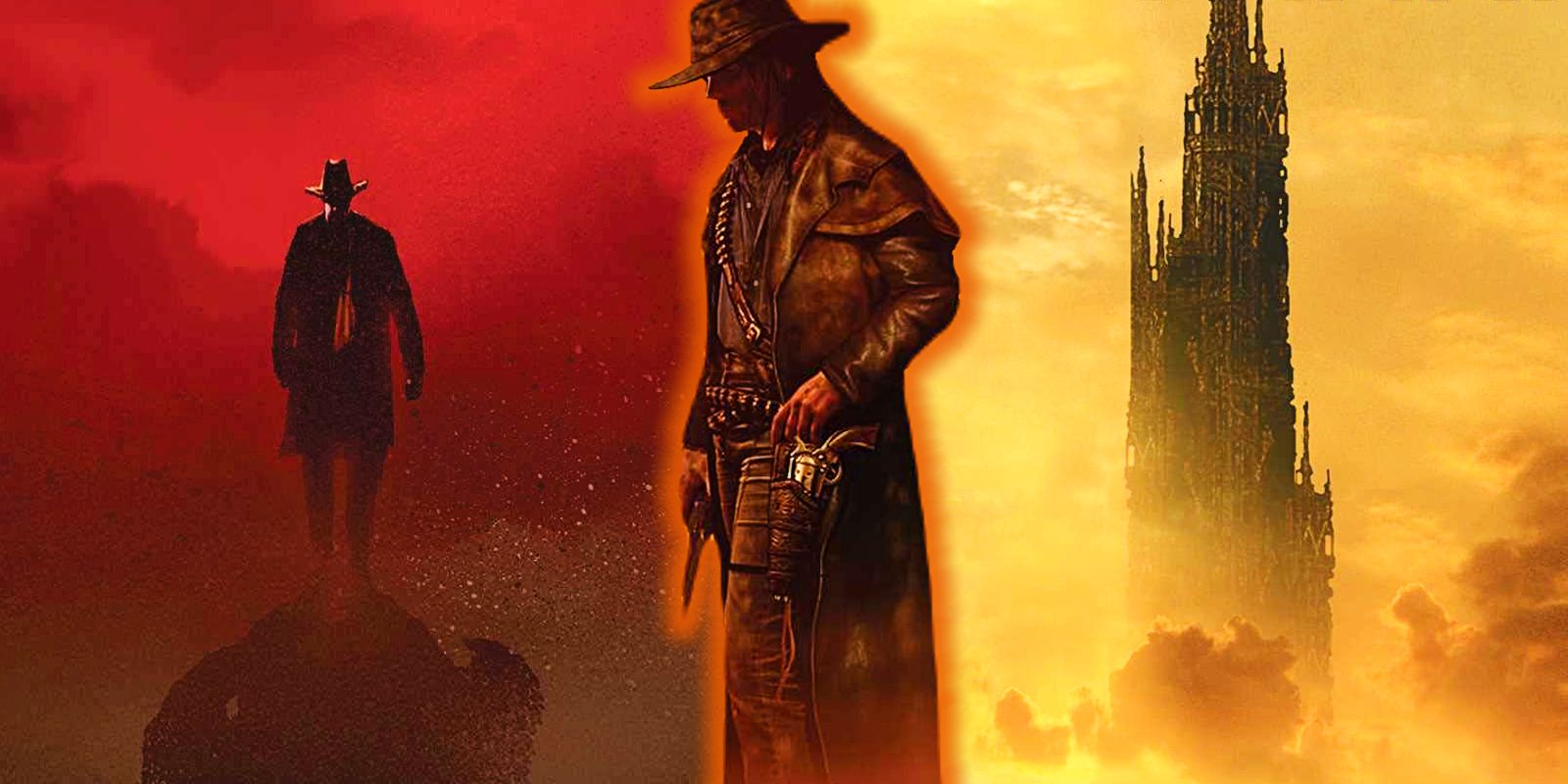
Related
Stephen King's New Project Might Solve A Dark Tower Canon Plot Hole That Has Bothered Readers For Years
Stephen King teased a new project that could bring together two of his universes that have long been the subject of some muddled canon consistency.
It has been speculated, albeit never confirmed, that Jack Sawyer is actually Tim Ross’ Twinner. Ross is a character from the fictional tale of the same name in The Wind Through the Keyhole, and their stories are strikingly similar. Both Ross and Sawyer share a resemblance, embark on quests to help their mothers, and lose their fathers to murder. However, The Black House suggests that Sawyer’s Twinner may actually be Roland Deschain, as Sawyer eventually becomes a police officer, and Deschain frequently mixes up law enforcement with gunslingers.
The Blasted Lands in The Talisman is described as being rife with fireballs and hellish creature.
There are a few details about the physical appearance of certain locations that suggest that The Dark Tower is connected to The Talisman and Black House, too. The Blasted Lands in The Talisman is described as being rife with fireballs and hellish creatures, which is an eerily similar visual to that of the Wastelands in The Dark Tower series.
2 The Eyes Of The Dragon (1987)
Randall Flagg Pops Up As The Villain In King's Fantasy Novel

There aren’t many references to The Eyes of the Dragon to The Dark Tower, but there are some small recurring settings and characters from the book series that crop up. The Eyes of the Dragon by Stephen King sees Randall Flagg as the main villain once again in an astounding fantasy book set in Delain, a realm from The Dark Tower’s prequel short story The Little Sisters of Eluria. Flagg serves as the advisor to King Roland the Good, and while it would appear that the King and Deschain are the same people or even Twinners, it’s never confirmed.

Related
Stephen King's Short Story Collections Ranked From Worst To Best
Stephen King is a master of horror, having written countless novels and 200+ short stories. Here's every Stephen King short story collection, ranked.
One of the Barony cities that is also visited is Gilead, where Roland Deschain is from and spent his childhood years. There are several references to Garlan, too, which is where Flagg claims that he is from. Another link to Flagg is through the character Rhea of the Cöos, a witch who is first introduced in Wizard and Glass. Her appearance in The Eyes of the Dragon is brief but chaotic, causing disaster at every turn, but she later becomes a notable enemy of Deschain’s.
1 Small Connections To Other Stephen King Works
Not Every Tie In Is As Obvious As Others
Cell (2006)
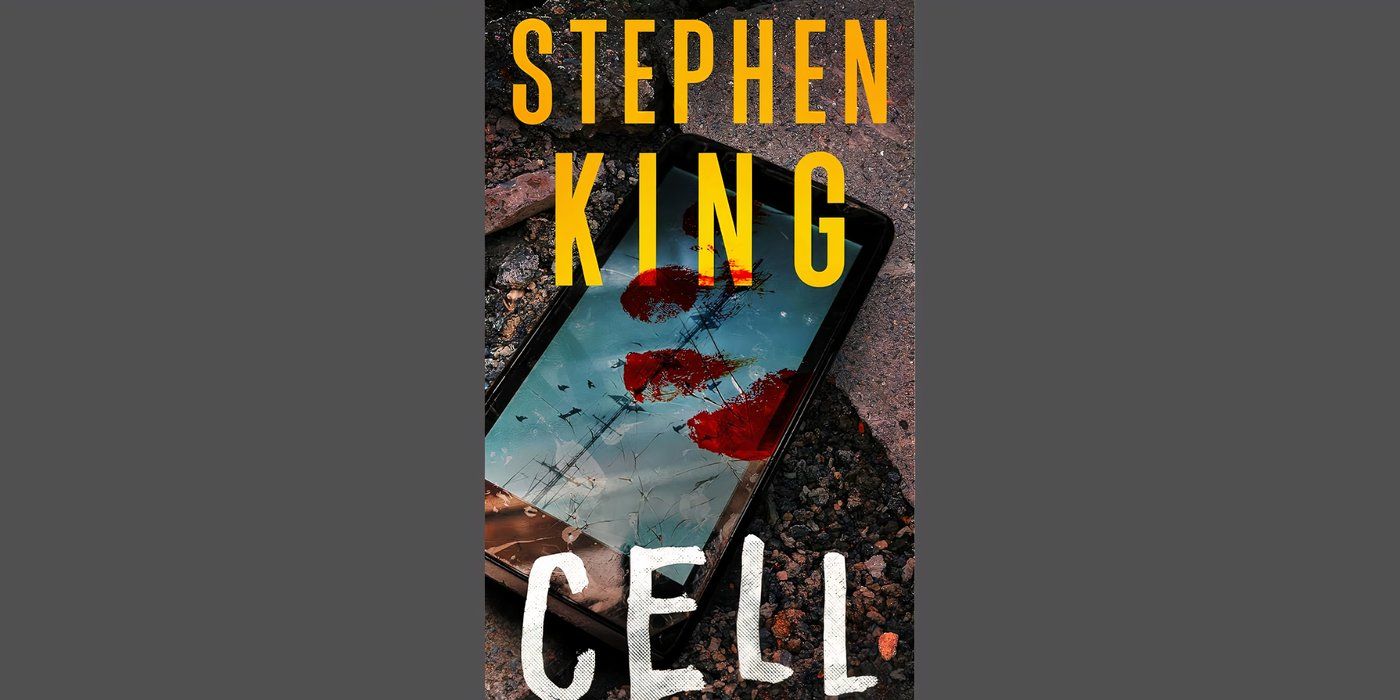
Cell follows graphic novel artist Clayton Riddell, one of the few who isn’t turned into a zombie after “The Pulse” event because he doesn’t own a mobile telephone. Before the catastrophe occurs, however, Clay attempts to sell a project of his entitled “ The Dark Wanderer .” His main character is an apocalyptic cowboy who is seemingly identical to Roland Deschain.
The Shining (1977)
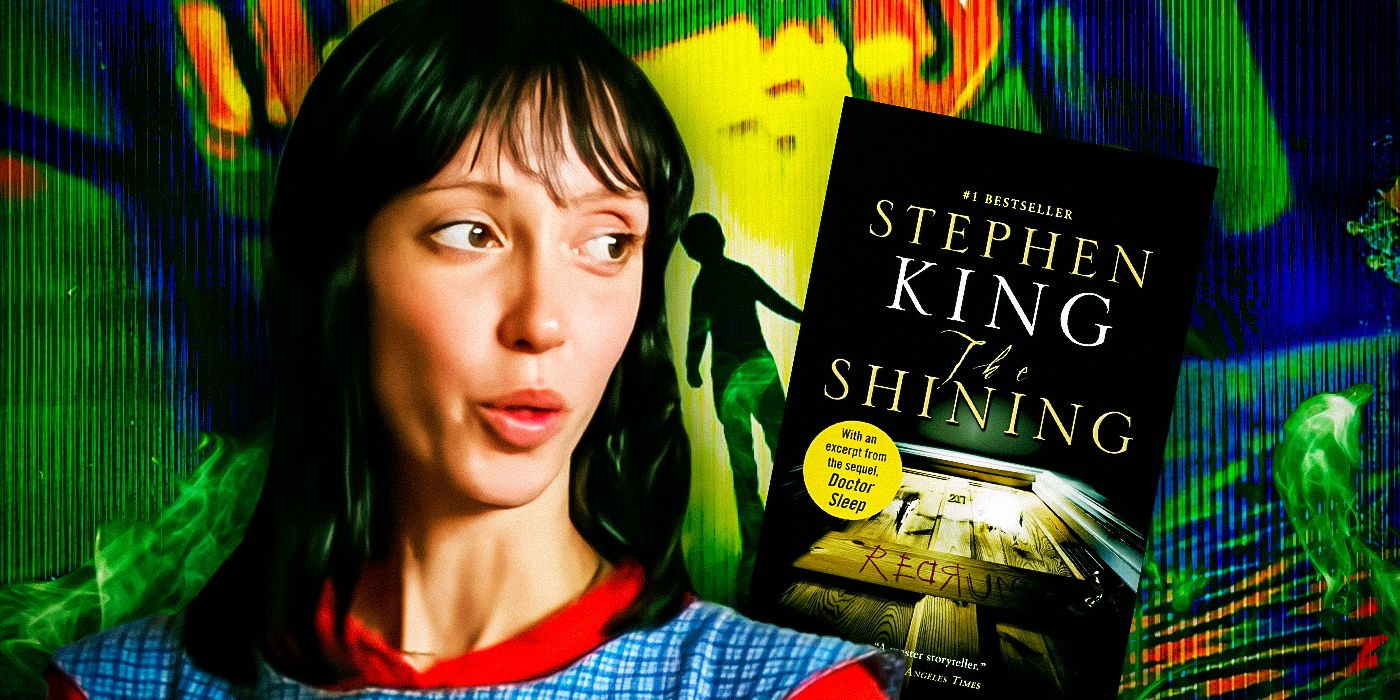 Custom Image by Yeider Chacon
Custom Image by Yeider Chacon There are several other Stephen King novels that make minute references that are relevant to The Dark Tower, but they aren’t necessarily a direct parallel. For example, The Shining as a novel is mentioned in The Dark Tower book series, and there is a nod to Danny Torrence, too. However, this is as far as it goes.
Everything’s Eventual (1997)

Stephen King’s 1997 novella Everything’s Eventual, which was later added to a collection of the same name, follows Dinky Earnshaw. Earnshaw is a Breaker and has the ability to manipulate others through his artwork, and the Trans Corporation recruits him to kill influential public figures. He manages to escape the evil company by the end of the story, but both he and the Trans Corporation reappear in The Dark Tower.
Readers learn that the Trans Corporation is a subsidiary of Sombra, another corporation that serves the Crimson King and is responsible for several events throughout the King universe, including trapping Father Callahan at the beginning of Wolves of the Calla. Earnshaw is also a minor character in The Dark Tower, and he appears alongside Hearts in Atlantis’ Ted Brautigan in helping Roland Deschain free their fellow Breakers.
11/22/63 (2011)
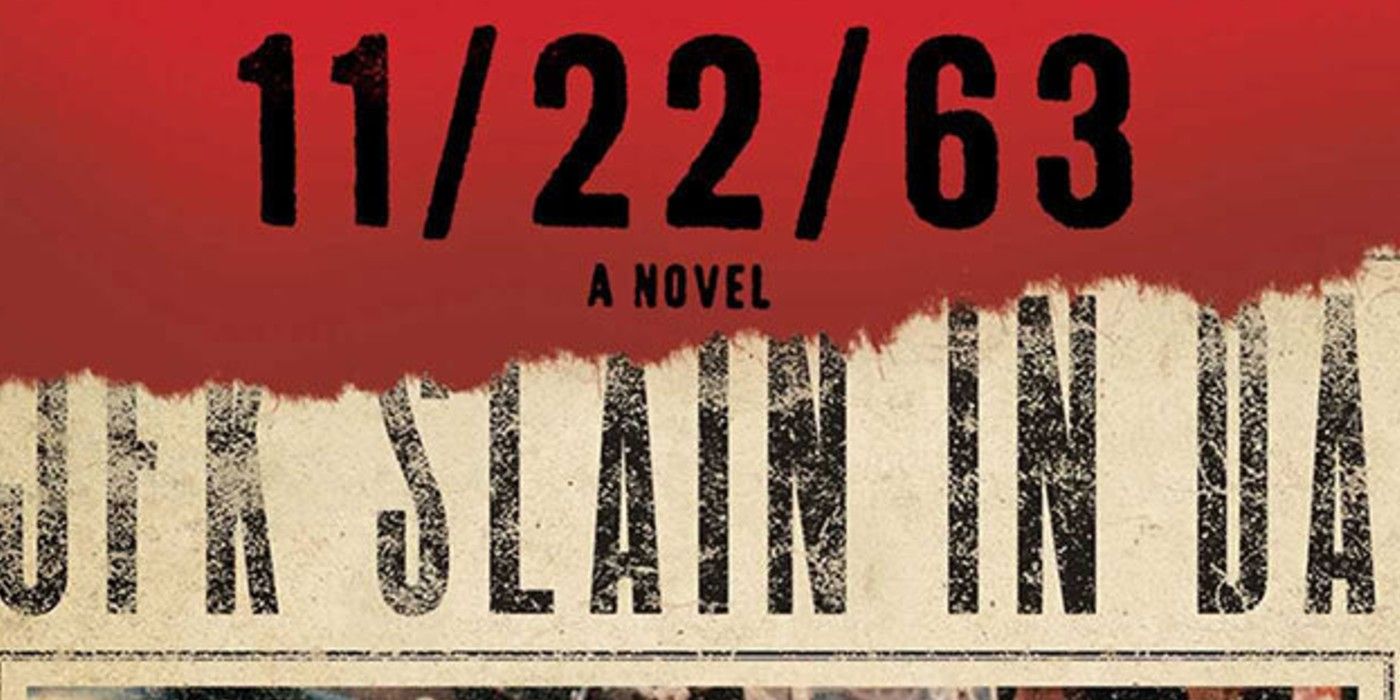
One of Stephen King’s best non-horror books, 11/22/63, doesn’t directly tie into The Dark Tower series, but there are a couple of details that could be considered such. For example, a specific model of the Takuro Spirit car is mentioned in a throwaway comment, and this vehicle is also seen in the post-apocalyptic Topeka in Wizard and Glass . There is also a line of dialogue in which Jake Epping is asked if he knows about “the turtle,” which could be referring to Maturin.
Buick 8 (2002)

Stephen King’s Buick 8 is another work that many readers consider to be connected to The Dark Tower. The cars that appear in The Dark Tower and Song of Susannah share a resemblance to the titular vehicle, and the strange figures that emerge from it have similarities to the Todash monsters.

Related
The Mist Ending: Controversial Book-To-Movie Changes Explained
The Mist has one of the most divisive endings in the history of Stephen King movie adaptations, and it's time to take a closer look at it.
Roland Deschain uses the alias Will Dearborn at one point, sharing a fake surname with Buick 8 ’s Sandy. Curt Wilcox starts reading a book by an author named Dr. John H. Maturin, a reference to King’s iconic Turtle.
The Mist (1980)

Although Stephen King has never confirmed it, it is implied that The Arrowhead Project in The Mist is able to create a thinny, a cloud of fog that allows creatures from Todash Space to escape through, which is also seen in The Talisman, too. Tim Ross also sees large, towering tentacles in The Wind through the Keyhole, which are resemblant of the titular figure in The Mist.
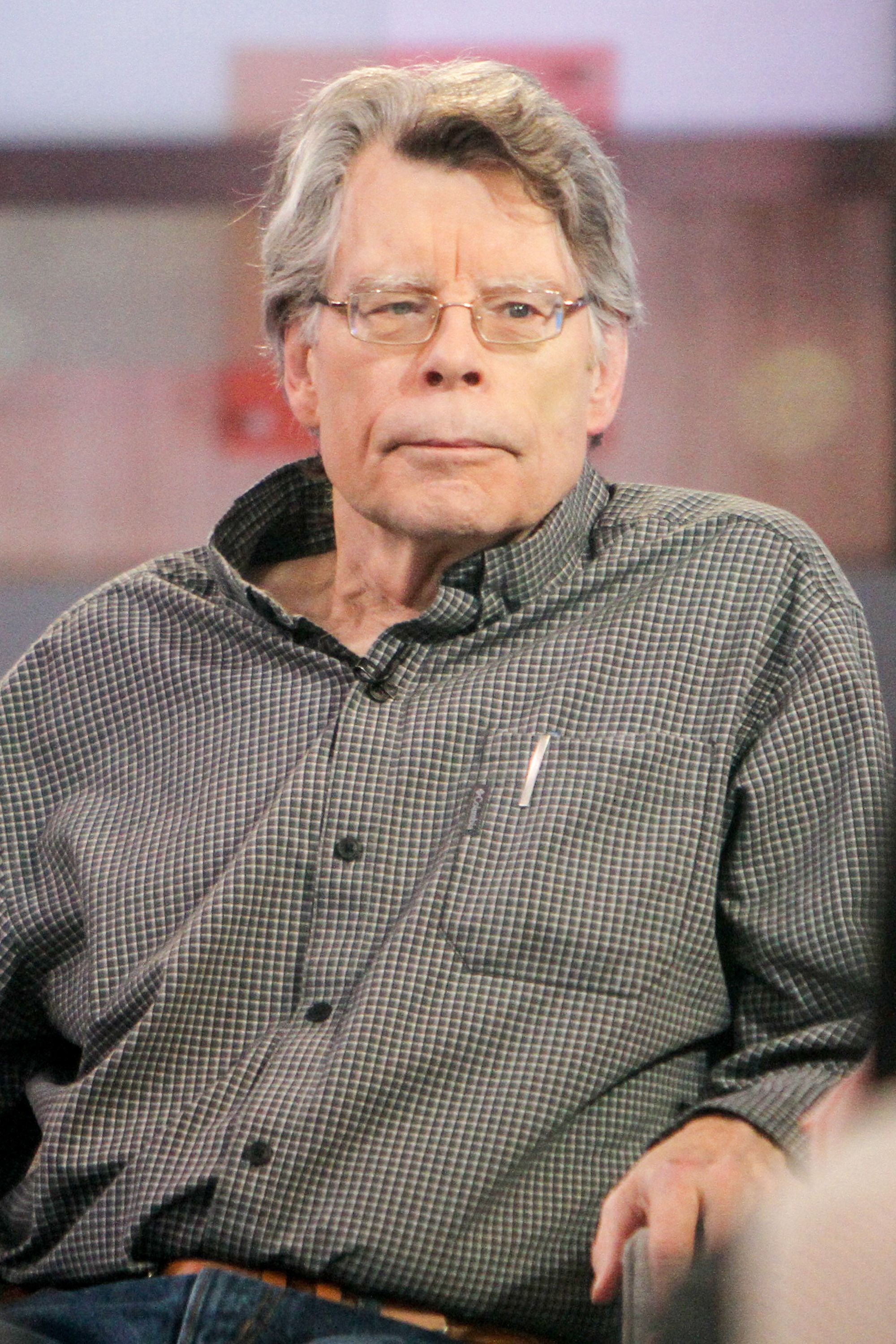
Stephen King
Discover the latest news and filmography for Stephen King, known for Creepshow and Sleepwalkers.



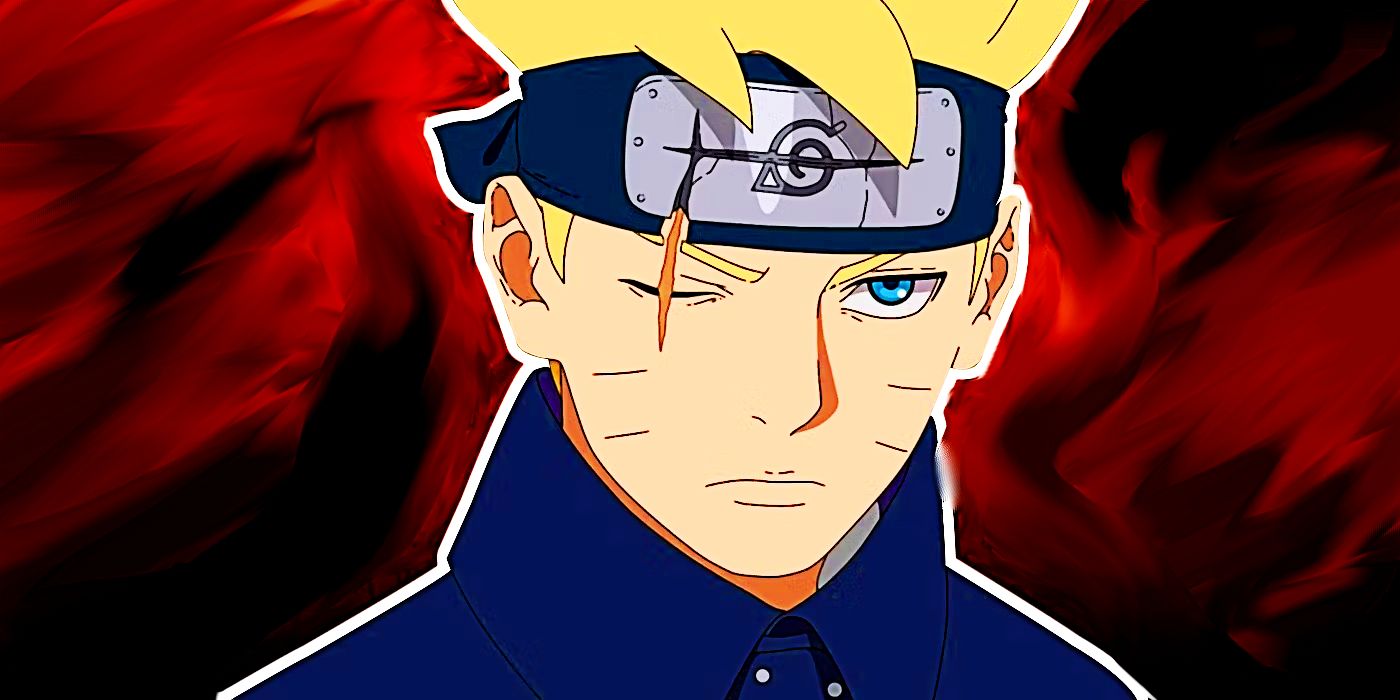


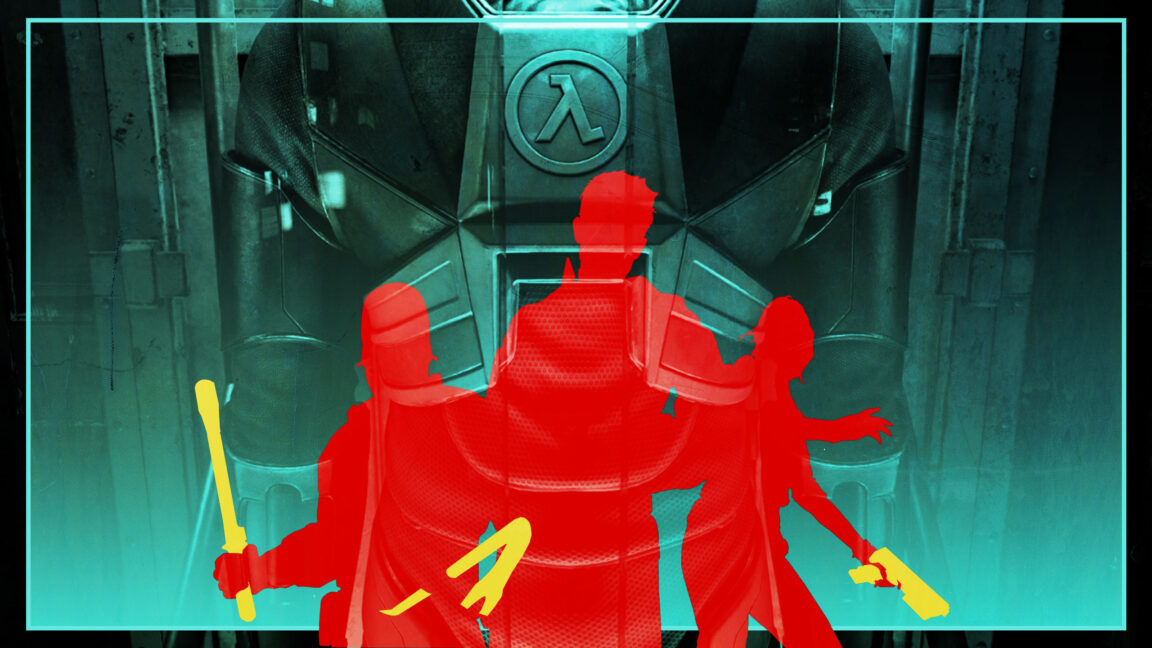
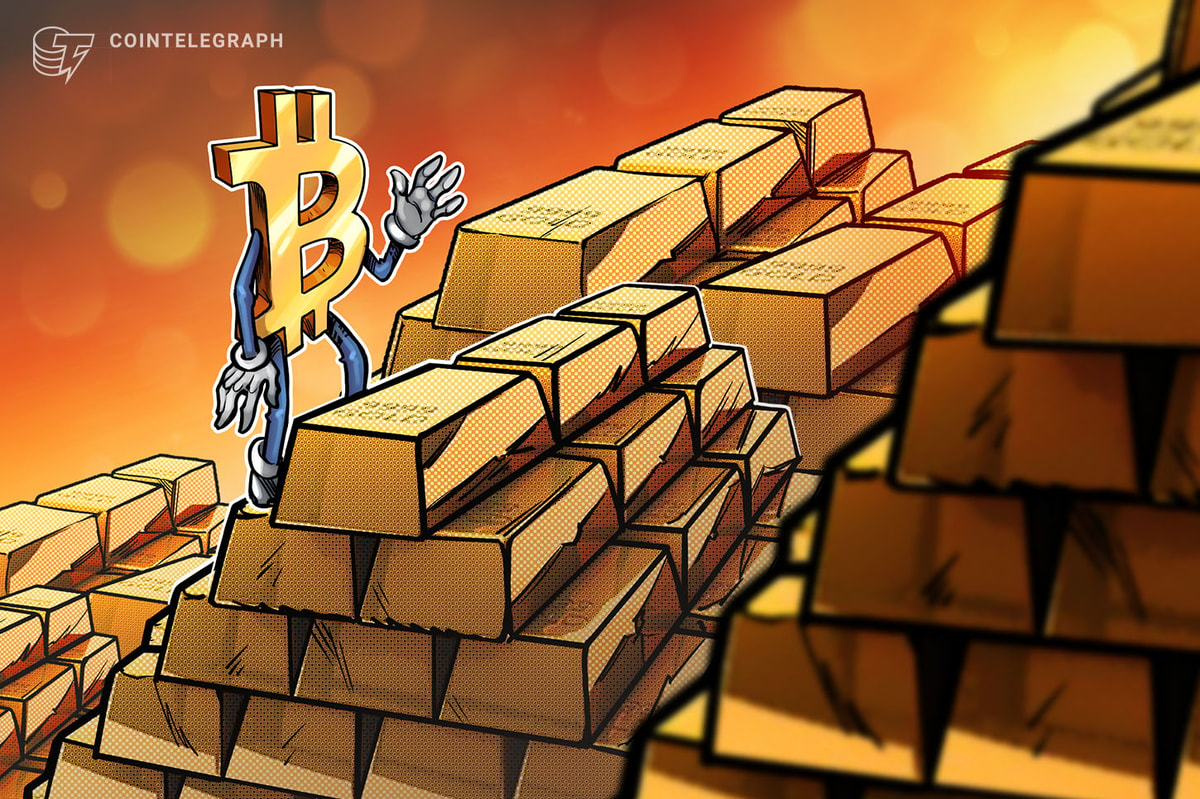

 English (US) ·
English (US) ·